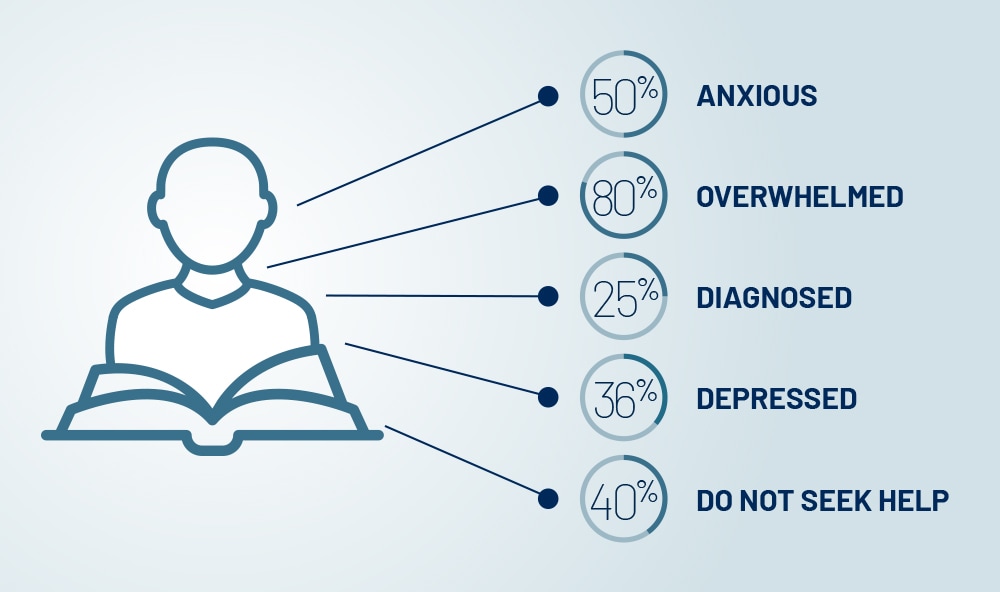
5 Ways Colleges and Universities Are Working to Improve Mental Health on Campus
Mental health is a growing concern at colleges and universities, and many are working to offer more resources and take a more proactive approach to help students. But there is still a lot of room for improvement.
According to the National Alliance on Mental Illness, 80% of college students feel overwhelmed by their responsibilities, 50% report that anxiety has caused them to struggle in school, and 36% report experiencing some level of depression. And yet 40% of students do not seek help.
So why are colleges and universities falling short? What can they do to help their students cope with or prevent anxiety, depression, and other mental health issues, and make sure they get the help they need when they need it? And what role do marketing and communications teams play?
A Comprehensive, Coordinated Approach
One of the biggest challenges for addressing mental health on campus is to make sure students are aware of the resources available to them and feel comfortable using those resources. One of the ways to achieve this is to talk about mental health frequently and consistently. Another is to involve faculty, staff, and students at every level, from recruiting and admissions officers to counselors, student life coordinators, faculty, staff, and student leaders.
Here are just some of the ways that schools are making mental health a bigger priority, and creating a more robust network of resources:
- Recruitment materials and counseling that openly discusses the challenges new students face, emphasizing that anxiety is common and introducing students to available resources and activities to help them adjust to college life.
- Training programs and materials that teach faculty, staff, coaches, and student leaders the signs of depression, anxiety, and other mental health issues. These resources demonstrate ways to approach students who may benefit from mental health resources.
- Resources and activities such as meditation, mindfulness and yoga classes, support groups, therapy pets, and relaxation rooms to help students de-stress. Student-centered campaigns can promote these resources through a variety of channels, including student testimonial videos, posters, and articles on student life.
- Student and faculty mentor programs that include mental health components, and use email and texts to follow up with students. These programs are designed to encourage engagement and measure student response.
- Online resources that put mental health information and resources at students’ fingertips through student portals. Supplementary print pieces with links to these resources can be housed in visible displays in heavily trafficked areas such as dining halls, libraries, and student centers.
Communicating With Students About Mental Health
Effective marketing and communications are a key component of any overall strategy for colleges and universities that makes students’ mental health a priority. It’s important to communicate with students about their mental health along every step of their journey, and do it in an engaging manner. The goal is to remove the stigma from mental health issues and make access to resources convenient while creating an atmosphere that is understanding, uplifting, and empowering.
At LIGHTSTREAM, we have expertise that comes from working with both universities and health systems across the country, making us the perfect partner when it comes to promoting mental health. Our team is able to help your organization develop and implement a marketing and communications plan that supports your college or university’s strategic vision for student mental health and well-being.
